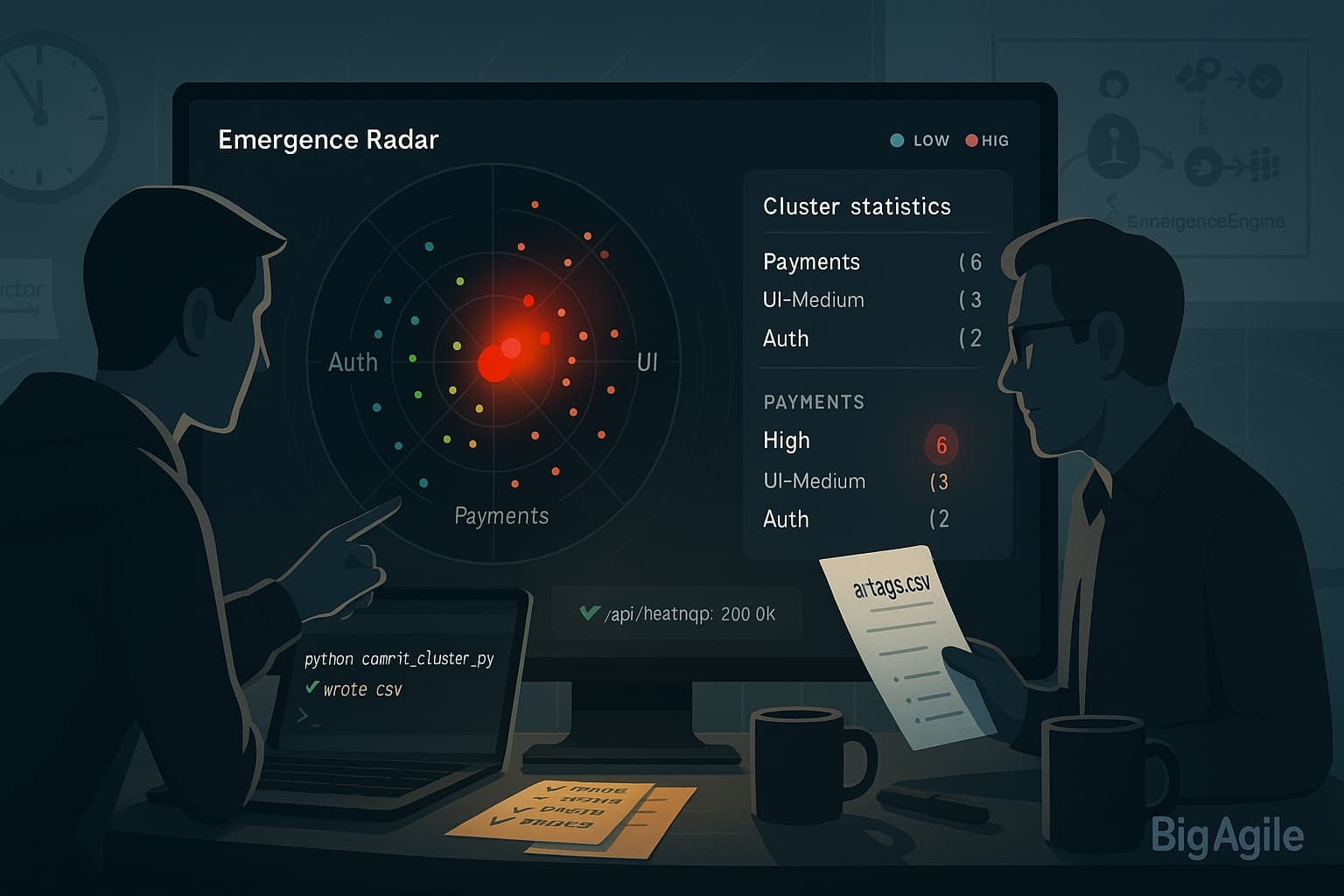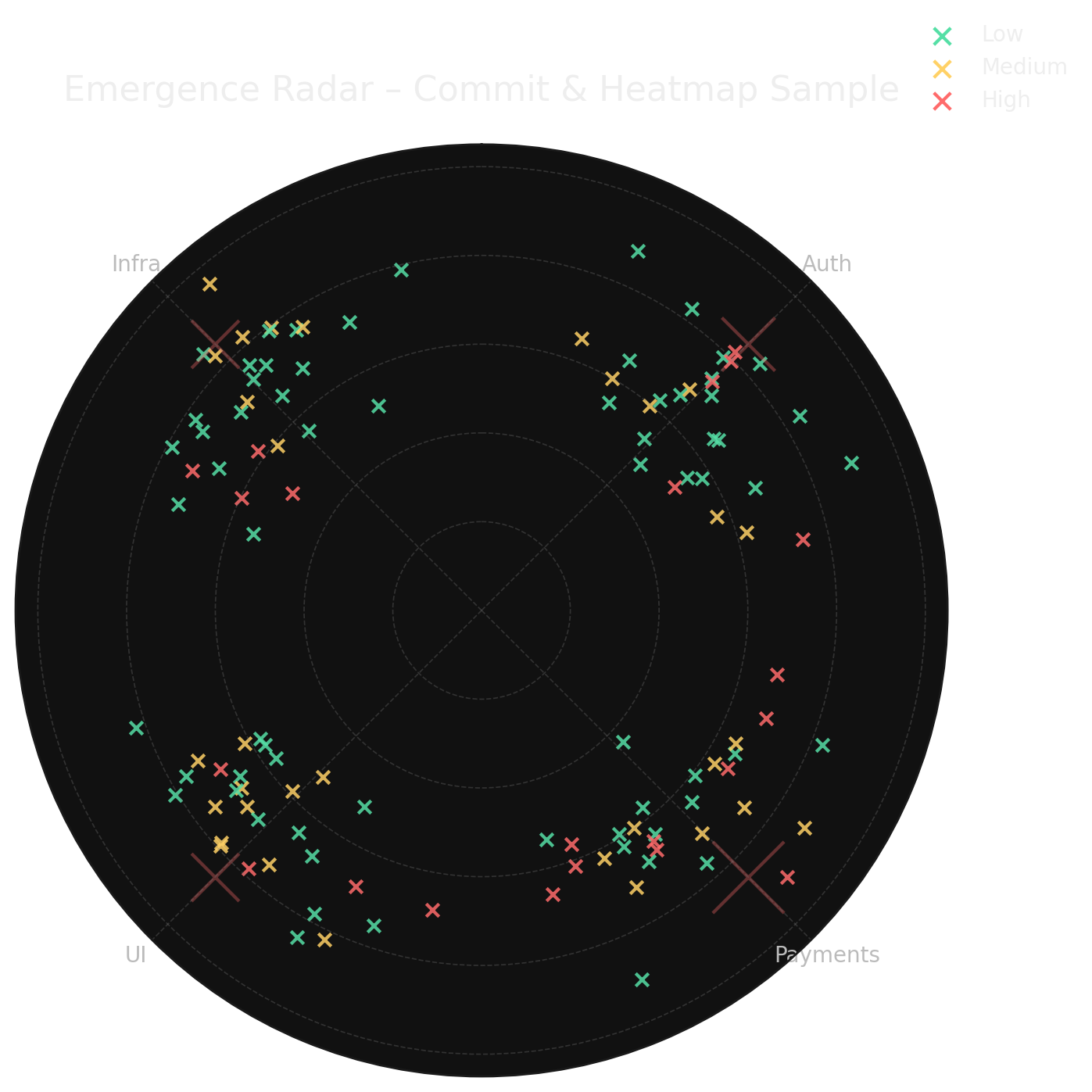
The Problem.
Our team's repo might ship 300 commits a week, but unless you categorize them by theme, you won’t see stealth debt accumulating or feature work spreading across five micro-domains. Reviewers waste hours switching contexts, product owners find surprise scope late, and sprint planning turns into archaeology.
The Agility.
Business agility prizes focus on value and ongoing feedback. AI-driven Commit-Cluster Mapping aligns with both by grouping recent commits into emerging themes, Auth, Payments, UI, Infra, and then color-codes them based on risk. This allows teams to identify areas of concentration, diffusion, or silent debt in near-real time. When code patterns emerge the same day they form, you can guide the backlog with evidence rather than intuition.
The Scrum.
| Step | Action | Command / Snippet |
|---|---|---|
| 1 | Pull fresh commits (past 14 days). | python ingest_git.py --repo ~/code/myproduct --since 14 --out data/commits.json |
| 2 | Generate AI tags (theme, risk, effort) via OpenAI | python commit_cluster.py data/commits.json data/ai_tags.csv |
| 3 | Add heatmap route in radar.py. | @app.route("/api/heatmap")def heatmap(): df = pd.read_csv("data/ai_tags.csv") counts = df.groupby(["theme","risk"]).size().reset_index(name="n") return jsonify(counts.to_dict("records")) |
| 4 | Update radar.js to render risk-colored density blobs. | See full code in GitHub snippet below. |
| 5 | Review heatmap for hotspots in grooming; flag top two clusters as backlog items. | No command, just a 10-min screen-share. |
Heatmap renderer (app/static/radar.js patch)
fetch('/api/heatmap').then(r=>r.json()).then(data=>{
const color = {Low:'#56dfa6', Medium:'#ffd166', High:'#ff6b6b'};
data.forEach(d=>{
drawBlob(d.theme, color[d.risk], +d.n); // your helper uses theme→angle
});
}); (Full patch pushed to big-agile/emergence-radar branch heatmap-day.)
The Outcome.
By the end of this sprint, you’ll start stand-ups with a live heatmap: red blobs shouting “Payments-High-Risk x7,” green specks humming “UI-Low-Risk x2.” Reviewers will focus on the loudest cluster, product owners will triage scope early, and the team will stop saying "I didn’t know we were touching that subsystem.” In pilot teams, we’ve seen review time drop 40% and rework defects decrease by 25% after just two iterations of cluster-driven grooming.

Let’s Do This!
Commit-Cluster Mapping transforms raw Git noise into a color-coded story: revealing where you’re innovating, where debt accumulates, and where attention should focus. Tomorrow, we’ll overlay sentiment on these clusters so you can discern whether the red indicates risky code or an exhausted team crying out for help.